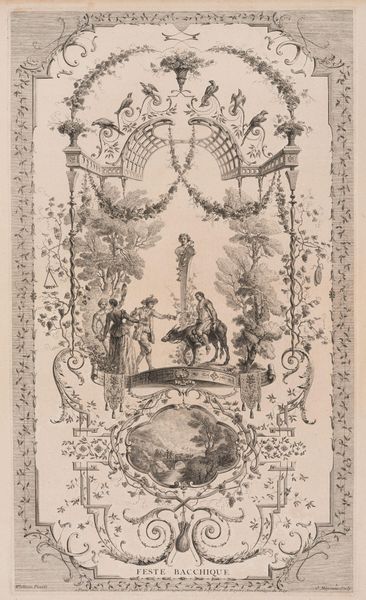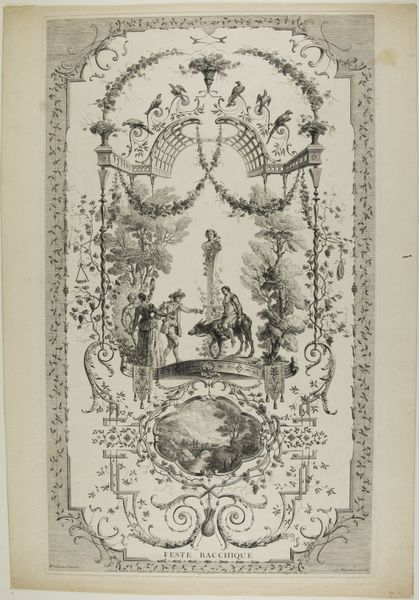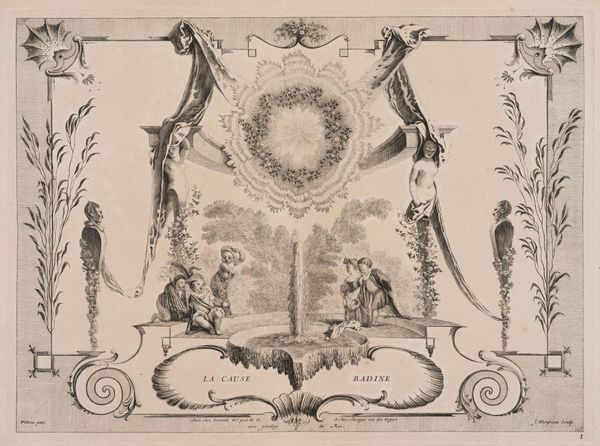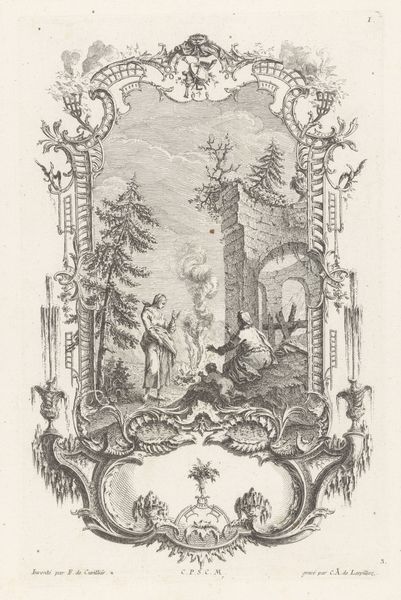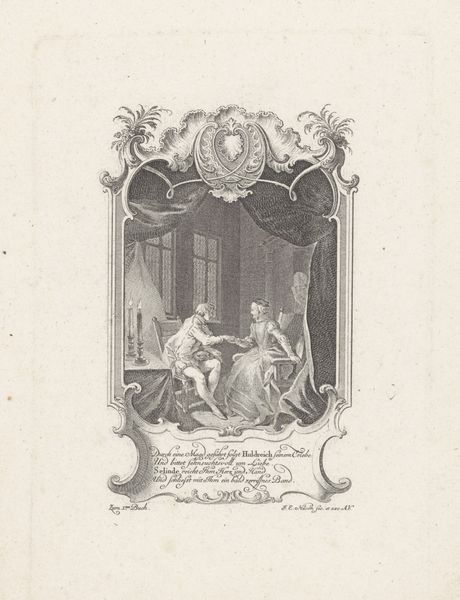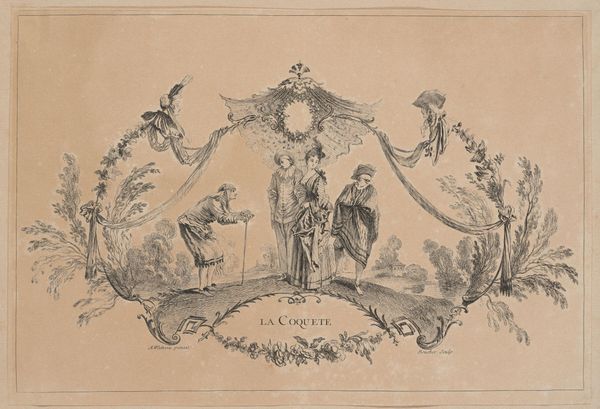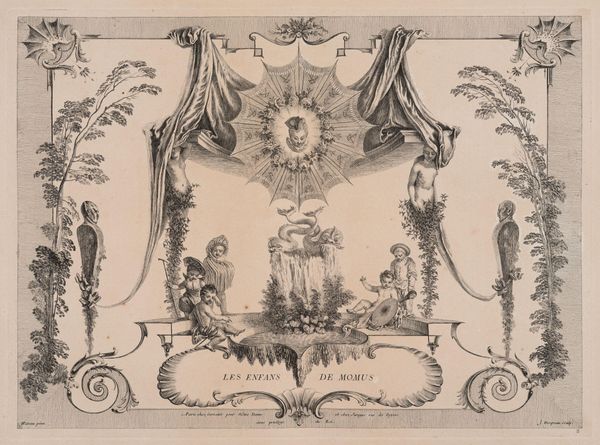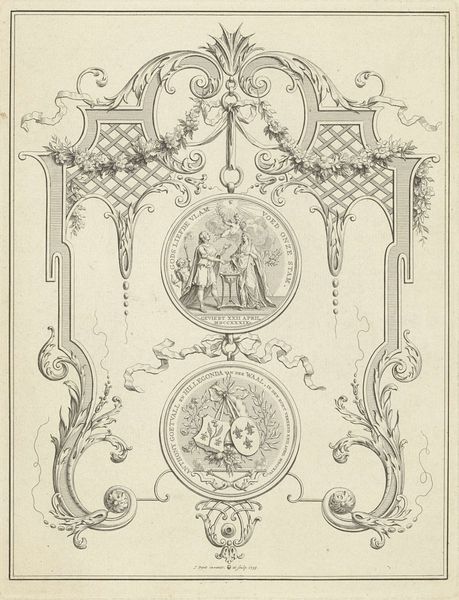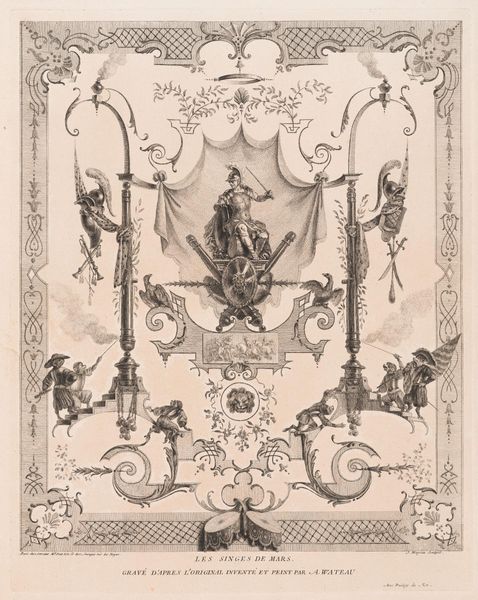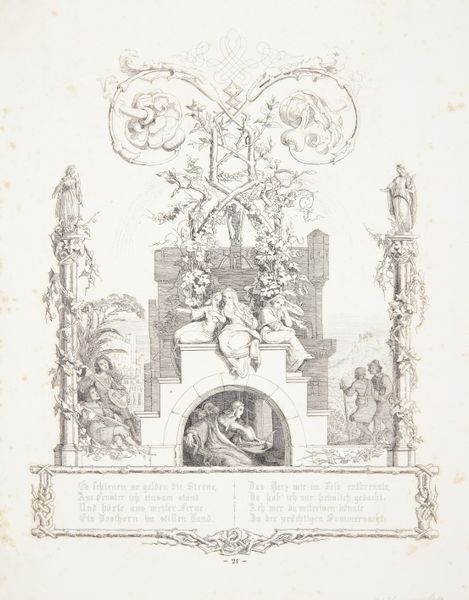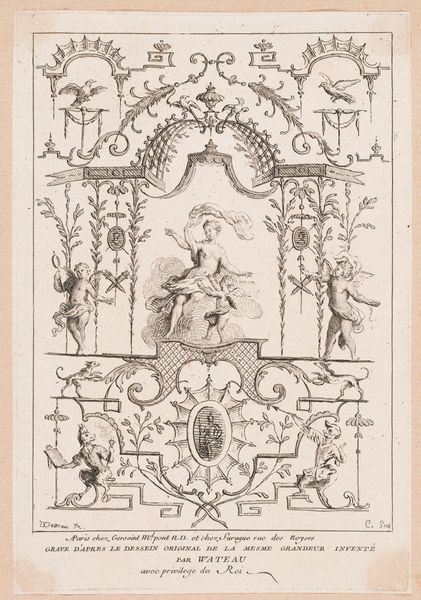
drawing, print, paper, ink, engraving
#
drawing
#
narrative-art
# print
#
figuration
#
paper
#
ink
#
romanticism
#
engraving
Dimensions: 212 mm (height) x 157 mm (width) (bladmaal)
Curator: This is "Vignetter til Wiborgs digtsamling: En Molaccord" created by Georg Emil Libert in 1842. It's an engraving done in ink on paper. The title translates roughly to "Vignettes for Wiborg's Poetry Collection: A Minor Chord." Editor: It certainly strikes a somber note. The intricate border work, almost thorny, seems to confine the narrative vignettes. The limited color palette further emphasizes a subdued, melancholic atmosphere. Curator: It's part of a larger cultural and political context. Denmark was grappling with national identity in the face of external pressures and internal reforms. Libert’s piece connects to themes of longing and loss prevalent in the Romantic period, reflecting the poetry of Wiborg and its relationship to questions of identity and historical consciousness. Editor: I see what you mean. There’s a tension created by the high level of ornamentation – look at those flourishing vegetal scrolls—surrounding scenes depicting what appear to be intimate moments of family and maybe societal dysfunction. Are we to read the natural world, idealized in the embellishments, as being at odds with lived human experience? I wonder if that tension is highlighted through printmaking. How were such images circulated? Were these included within printed poetry volumes? Curator: The artist, Georg Emil Libert, plays with shadow and composition, evoking profound questions concerning human condition. He seems fascinated by liminal spaces - both physically in terms of rooms with barred windows as well as conceptually, reflecting the in-between states of love and rejection, innocence and experience, which are echoed throughout the entire poem of Wiborg. The angelic figures hovering in the scene point toward deeper concerns too, don't you think? Editor: Absolutely, that relationship of life with religious elements certainly is a factor. These reproductive prints democratized access to artistic representations in Denmark, helping shape a collective identity among people from varying social and economic background as new media. How accessible these poetic visions really were beyond urban areas is also important when one analyzes these illustrations from a Materialist position. Curator: Considering the complex socio-cultural factors interwoven into this single drawing really amplifies the emotional resonance that goes way beyond personal feelings of longing. Editor: Right, observing how a tangible artistic method allowed for the broad propagation of artistic, philosophical and politically tinted concepts completely changes our way to see and experience an artwork.
Comments
No comments
Be the first to comment and join the conversation on the ultimate creative platform.
